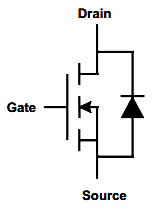
To understand pressure sensors, first, you need to understand pressure. Pressure is an expression of force exerted on a surface per unit area. We commonly measure the pressure of liquids, air, and other gases, amongst other things. The standard unit for pressure is the “Pascal”. This is equivalent to one “Newton per meter squared”.
A pressure sensor simply monitors this pressure and can display it in one of the several units known around the world. This is commonly the “Pascal”, “Bar”, and “PSI” or pounds per square inch in the United States. The pressure of the air in your tire is a great example of pressure and how it is measured. As we air the tire up, the force it exerts on the tire increases, causing the tire to inflate. This is monitored with a pressure sensor inside the tire on newer vehicles.
So how does a pressure sensor work? In a nutshell, it converts the pressure to a small electrical signal that is transmitted and displayed. These are also commonly called pressure transmitters because of this. Two common signals that are used is a 4 to 20 milliamps signal and a 0 to 5 Volts signal.
Most pressure sensors work off of the piezoelectric effect. This is when a material creates an electric charge in response to stress. This stress is usually pressure but can be twisting, bending, or vibrations. The pressure sensor detects the pressure and can determine the amount of pressure by measuring the electric charge. Pressure sensors need to be calibrated so it knows what voltage or milliamp signal corresponds to what pressure. This is a basic “Zero” and “Span” calibration or minimum and maximum which is a common job for maintenance personnel.
In the article “What is Sensor Calibration and Why is it Important?” we described the sensor calibration in detail. What are some of the common types of pressure that you can measure with a pressure sensor? There are three common types that we use in the industry. First being “Gauge Pressure”. This is measured in reference to atmospheric pressure which is typically 14.7 PSI. You will show a “positive” pressure when it is above atmospheric pressure and a “negative” when it is below atmospheric pressure. The next type is “Absolute Pressure”. Simply put, this is the pressure as measured against absolute vacuum. A full vacuum will have an absolute pressure of 0 PSIa and increase from there. If you need to read a pressure that is lower than atmospheric pressure, this is the type of sensor you would use.
The last type that is commonly monitored in the industry is “Differential pressure”. This is exactly what it sounds like, the difference between two pressures, a pressure being measured and a reference pressure. In industry, pressure sensors are used for a wide variety of processes. Some common uses are to measure the pressure of steam. Steam is commonly used to heat many processes in manufacturing facilities. This pressure sensor on the steam system can serve multiple purposes though. First and most obvious is to observe and monitor the pressure. Another purpose is to control when and where steam can flow and regulate its pressure. Steam can build up a pressure in a vessel and become dangerous. We can use the pressure sensor as an input device to open and close a control valve to keep the pressure and steam flow regulated. This only requires simple programming in the PLC to achieve this.
Pressure sensors are also installed next to filters in many industrial processes. If the filter begins to clog, the flow will decrease. As the flow of the liquid decreases, pressure can increase or decrease depending on which side of the filter is monitored. If you monitor the pressure, it will give you a simple indication that the filter is clogged and needs to be cleaned or replaced.
A common use that isn’t as obvious is the use of a pressure sensor as a level sensor. In an open tank, you can use the hydrostatic pressure that is measured at the sensor. With a little math, using the size of the tank and specific gravity of the liquid, we can determine how much of that liquid is in the tank. If the tank is closed, it isn’t as simple of an installation. It is still a viable option though. This will require at least two sensors to measure differential pressure. The high-pressure sensor would be located at the bottom of the tank measuring the liquid pressure and the low-pressure sensor near the top measuring the air pressure inside. A calculation can then be performed to figure out how much liquid is in the tank.
Let’s take a look back at what we have learned. Pressure is an expression of force exerted on a surface per unit area. The standard units are the Pascal, Bar, and PSI or pounds per square inch. Pressure sensors convert the pressure into an electrical signal that can be transmitted and displayed. This is why many sensors are referred to as transmitters. These sensors commonly measure Gauge Pressure, Absolute Pressure, and Differential Pressure. Gauge pressure is measured against the atmospheric pressure, absolute is measured against a vacuum, and the differential pressure is the difference between two pressures. Pressure sensors are commonly used to monitor pressures in different processes. A common thing to monitor is steam pressure. That pressure sensor can be used to control a valve to keep steam pressure at a constant level. Another common but lesser known use is to monitor the level of a liquid in a tank. Filter clogs are a common use of differential pressure monitoring. By knowing the pressure before and after the filter, you can determine if it is clogged.






1 thought on “What is Pressure Sensor? Types of Pressure Sensors?”